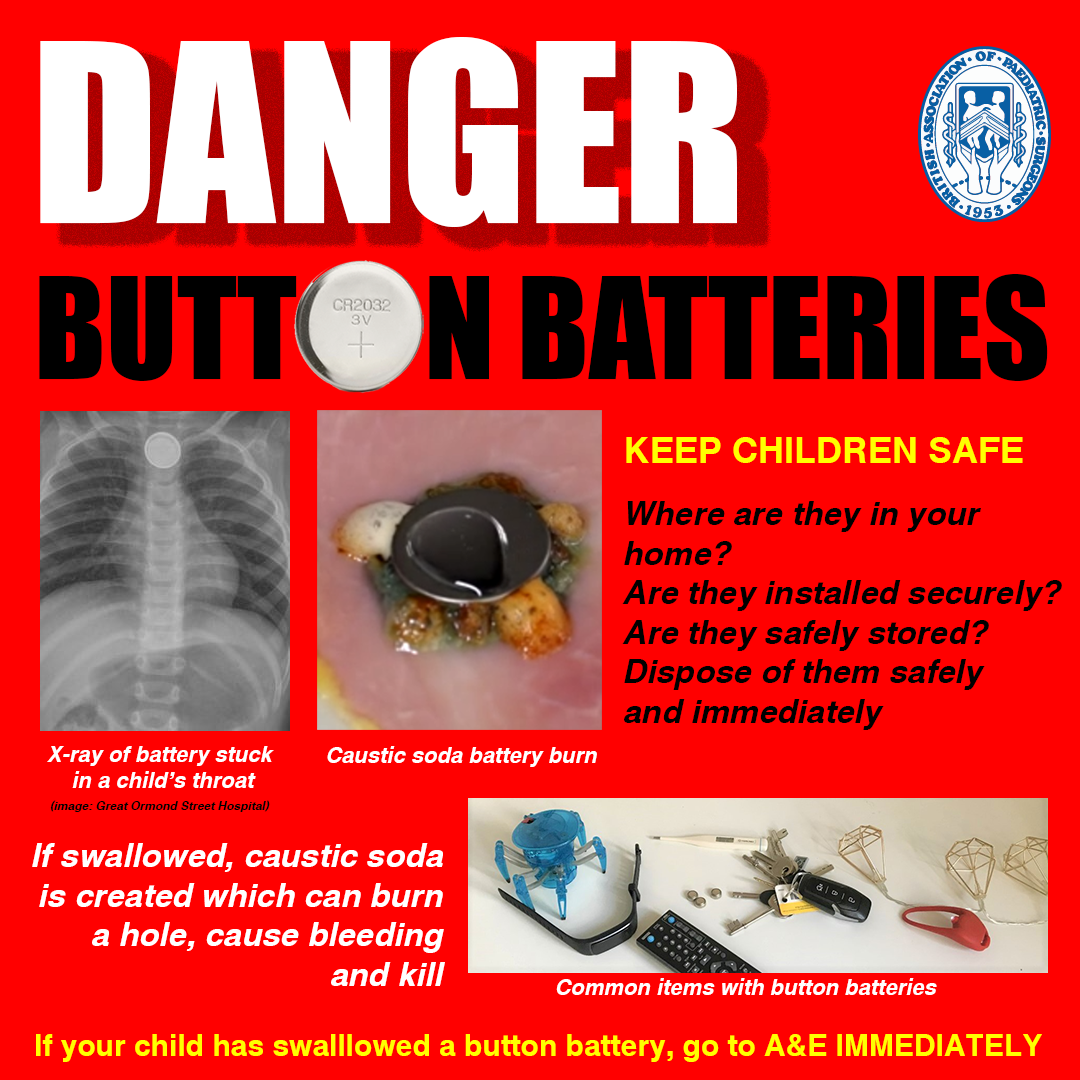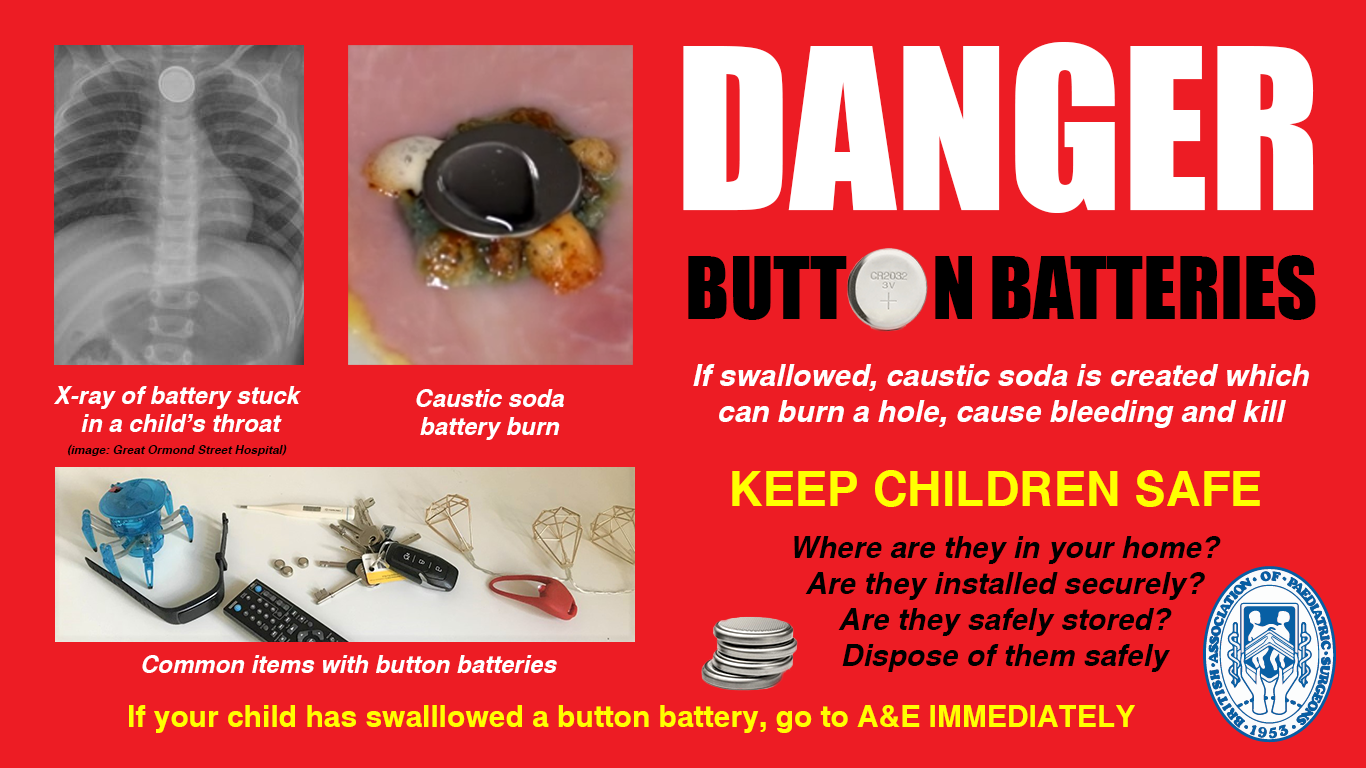Keep children safe from button batteries at Christmas
 Paediatric surgeons see life-threatening injuries in children from swallowing button batteries and operate to remove them and repair the damage. However, we really need to keep children safe from button batteries by preventing these potentially fatal injuries happening in the first place.
Paediatric surgeons see life-threatening injuries in children from swallowing button batteries and operate to remove them and repair the damage. However, we really need to keep children safe from button batteries by preventing these potentially fatal injuries happening in the first place.
At the end of 2020, families are spending more time at home with wintry weather, tiered lockdowns, home-working, and holidays approaching. As a result, there may be more gadgets and toys in the home posing potential risks if they contain button batteries. Additionally, new parents may not have seen previous safety campaigns as the Covid-19 pandemic dominates everyone’s attention. We need to minimise the risk to children in the run up to Christmas and are launching a social media campaign to raise awareness.

Why are button batteries so dangerous?
When a button battery is swallowed, caustic soda is created which can:
- chemically burn a hole
- cause severe bleeding
- and even kill
In under 4 hours, a button battery swallowed by a child can cause life threatening injuries. This video from the BBC shows the dangers of swallowing button batteries.
Keeping children safe
Babies and toddlers love putting things in their mouths- it’s how they discover and explore new things. Button batteries are the same size as sweets. We’re spending more time at indoors. Christmas brings even more toys, devices, gadgets and lights into our homes.
It sounds like a perfect storm, but you can keep children safe by checking:
- Where are they used in your home or childcare setting? Do you have any in your car?
- Are they installed securely? Are covers screwed down tightly and even taped over?
- Are they safely stored? Out of sight! Out of reach! Don’t leave them loose in a draw.
- And disposing of them safely and immediately – even used batteries can cause significant injuries.
Items containing button batteries include: watches, fitness trackers and clocks; digital thermometers; digital weighing scales; toys, gadgets and television remote controls; decorative, bicycle and scooter lights; car keyfobs; musical cards.

Share our safety campaign with these resources
Please share with anyone who looks after children, especially parents and grandparents of toddlers and babies.
You can share this page, our social media fliers and and Great Ormond Street Hospital’s information sheet. Click on the images to download:
| Twitter/ Facebook | |
|---|---|
 |
 |
| GIF | GOSH info sheet for families |
|---|---|
| An information sheet for families is available on the Great Ormond Street Hospital website. |
If a child has swallowed a button battery
Or you suspect they have:
- Go straight to A&E
- Do not try to make your child vomit and
- Ensure they have nothing to eat or drink
Suspect a child has swallowed a button battery?
Warning signs include:
- excess dribbling
- trouble swallowing
- vomiting
- coughing
- choking
- unexplained chest infections
Acknowledgements and thank-yous
Many thanks to Kate Cross, Consultant Neonatal and Paediatric Surgeon at Great Ormond Street Hospital for reporting on the 2016 campaign, supporting our Christmas 2020 campaign and allowing us adapt the content of her original article.
Photo credits: BBC, Child Accident Prevention Trust and Great Ormond Street Hospital
Shan Teo
Digital Manager